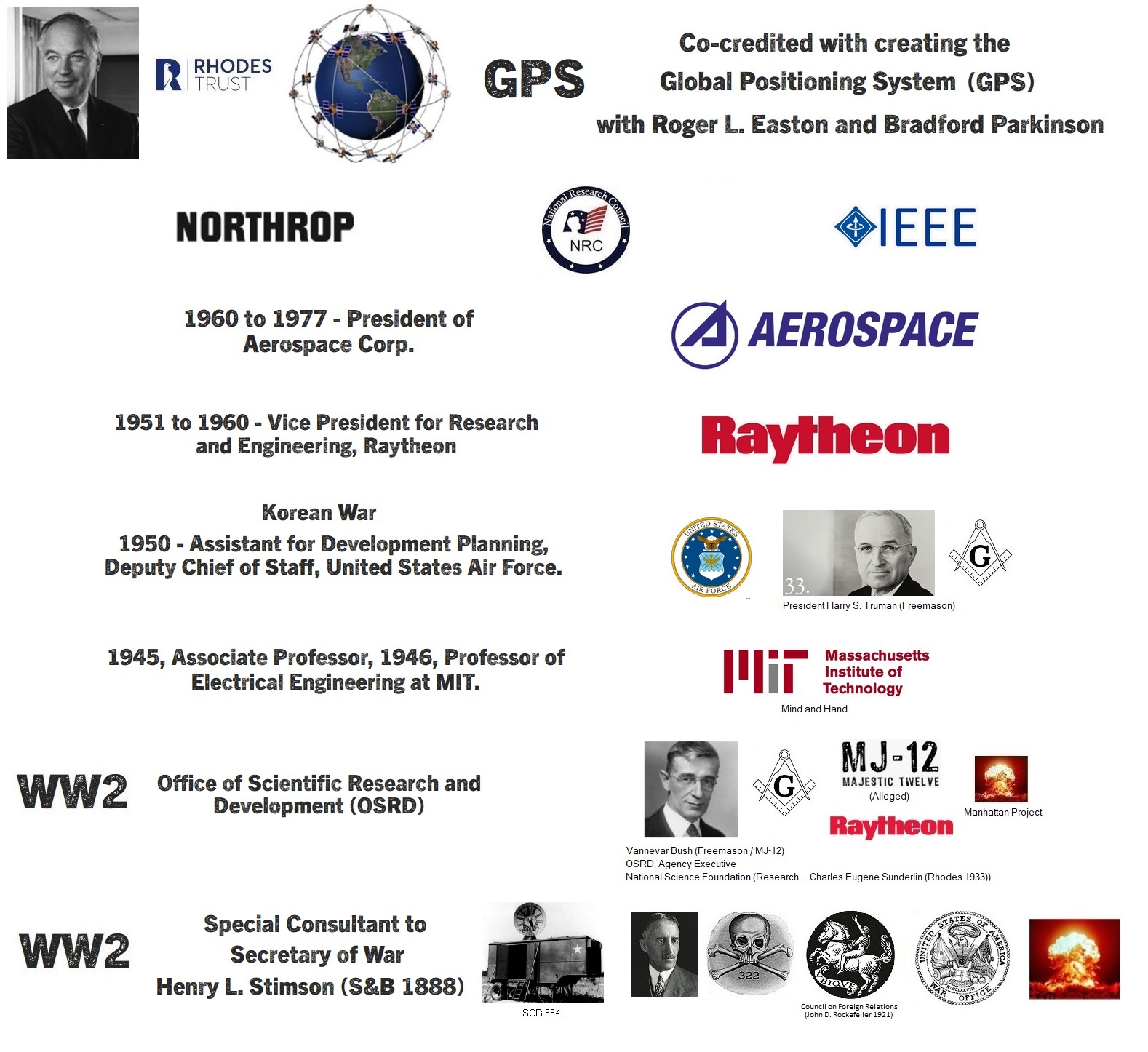
Ivan Alexander Getting (Rhodes 1933)
GPS, Weapons and Space Engineer/Executive. Rhodes Scholar, University of Oxford.
Credited with Roger L. Easton and Bradford Parkinson with the development of the Global Positioning System (GPS).[3]
The first GPS satellites were launched in 1978, but it was not until 1993 that the system became fully operational. Costs rapidly dwindled and its usage spread to countless civilian areas, as well as commercial applications such as automated farm tractors. Getting was an avid user himself and had a GPS aerial installed on the roof of his home in a seaside suburb of San Diego, California.[3]
2003 - Early this year Getting, and Stanford University’s Bradford Parkinson - who was regarded as the architect of GPS - shared the American National Academy of Engineering’s highest award for developing the device. “As far as GPS is concerned he got it first … it’s the passing of an era,” said Dr Parkinson on hearing of Getting’s death.
Founding member of the Air Force Scientific Advisory Group (later renamed the Scientific Advisory Board) and chair of its Electronics Panel. Provides a link between the Air Force and the nation’s scientific community, promoting the exchange of scientific and technical information to enhance the effectiveness of Air Force mission performance.[5]
The Corporation was established at the request of the Secretary of the Air Force as a non-profit organization to apply “the full resources of modern science and technology to the problem of achieving those continued advances in ballistic missiles and space systems, which are basic to national security.”
He served on the Board of Directors of the Northrop Corporation and the Board of Trustees of the Environmental Research Institute of Michigan.
As member of the Undersea Warfare Committee of the National Research Council: Associate Director of Project Nobska sponsored by the U.S. Navy and concerning submarine warfare weapons; recommended a submarine-based, solid-propellant intermediate-range ballistic missile that formed the basis for the Polaris missile.[3]
He was also involved in the development of the first high-speed flip-flop circuit at Harvard.[3]
1978 - Served as President of the Institute of Electrical and Electronics Engineer (IEEE).
Following his retirement in 1977, Dr. Getting served as a consultant to and board member of various companies. He remained associated with the Aerospace Corporation with the title President Emeritus.[5]
1960 to 1977 - President of Aerospace Corp. Oversaw studies on the use of satellites as the basis for a navigation system for vehicles moving rapidly in three dimensions. Planning for new ballistic missile systems; oversight of space launch systems; development of high-powered chemical lasers; contributions to the Mercury and Gemini space launch systems.[5]
1951 to 1960 - Vice President for Research and Engineering, Raytheon Weapons Company. Raytheon weapons company, where he was vice-president for research and engineering and was responsible for the development of the Sparrow III and Hawk missile systems. Oversaw the development of the first three-dimensional, time-difference-of-arrival position-finding system – developed in response to an Air Force requirement for a guidance system to be used with a proposed Intercontinental Ballistic Missile (ICBM) that would achieve mobility by traveling on a railroad system. He was involved in the development of the Navy GFCS MK-56 anti-aircraft fire control system; as well as in the development and building of a 350 MeV synchrotron at MIT Radiation Laboratory.[3]
Korean War - 1950 - Assistant for Development Planning, Deputy Chief of Staff, United States Air Force.[6]
1950 - work at the Pentagon.[3]
He later switched to ballistic missiles and worked on space launch systems with NASA, including the Gemini and Mercury programmes.[3]
1945, Associate Professor, 1946, Professor of Electrical Engineering at MIT.[5]
WW2 - He also served as head of the Naval Fire Control Section of the Office of Scientific Research and Development, member of the Combined Chiefs of Staff Committee on Searchlight and Fire Control, and head of the Radar Panel of the Research and Development Board of the Department of Defense.
WW2 - he was a special consultant to Secretary of War Henry L. Stimson (S&B 1888) on the Army’s use of radar.[5]
WW2 - 1942 - In his 30s when he devised the SCR 584 automatic microwave tracking fire-control system that enabled anti-aircraft guns to down 95% of the V-1 German “doodlebugs” or “buzz bombs” - cruise missiles in today’s terminology - that terrified Londoners late in the second world war with their random destruction.[3]
By the beginning of the war (WW2), he was back at MIT researching radar.[3]
Fellow, Harvard University working on Cosmic Rays.[3]
1933 to 1935 - Rhodes Scholar, Merton College, University of Oxford.[1] (PhD Astrophysics).[3]
Received a scholarship to the Massachusetts Institute of Technology.[3]
Died 11 Oct 2003, from Not Known. Age 91
[2] - FYI - Wiki - Ivan Alexander Getting (Rhodes 1933)
[4] - Merton College Register 1900-1964. Oxford: Basil Blackwell
[5] - Air Force Space Command - Biography
[6] - National Academy of Engineering - Biography



Comments